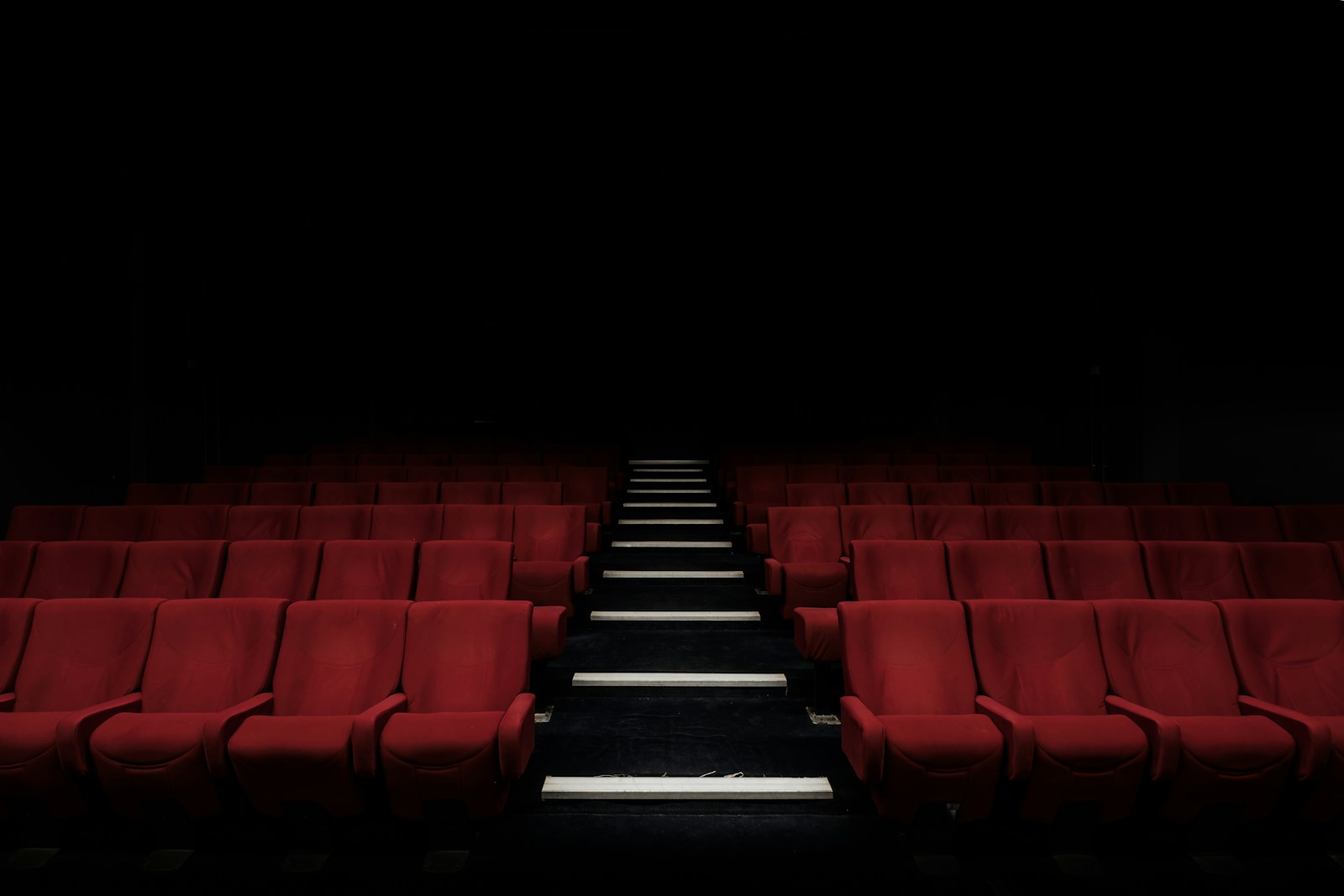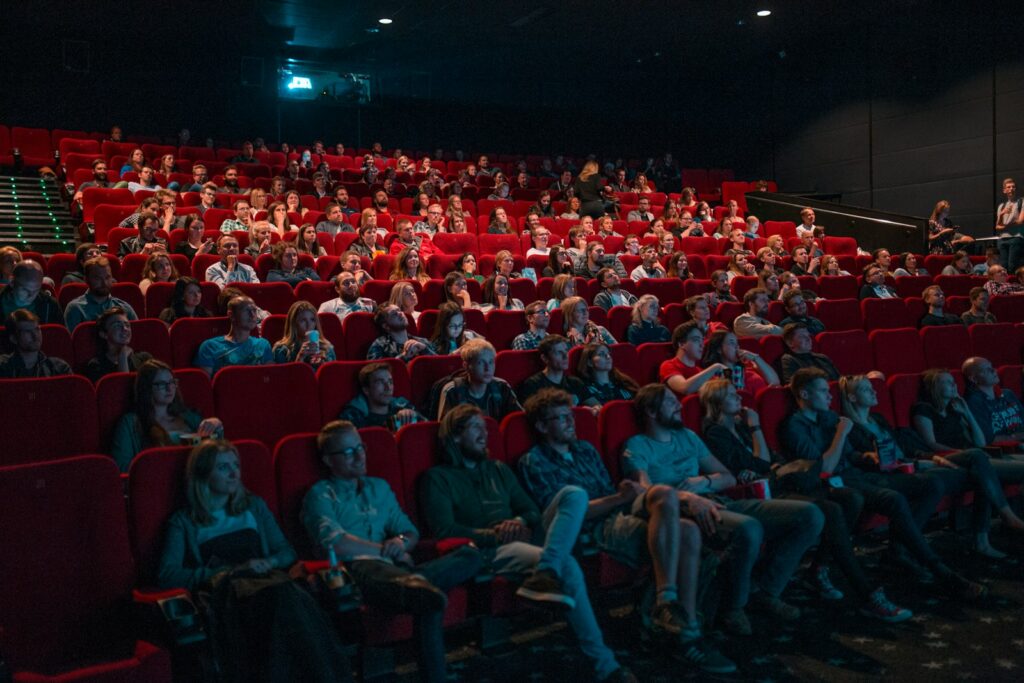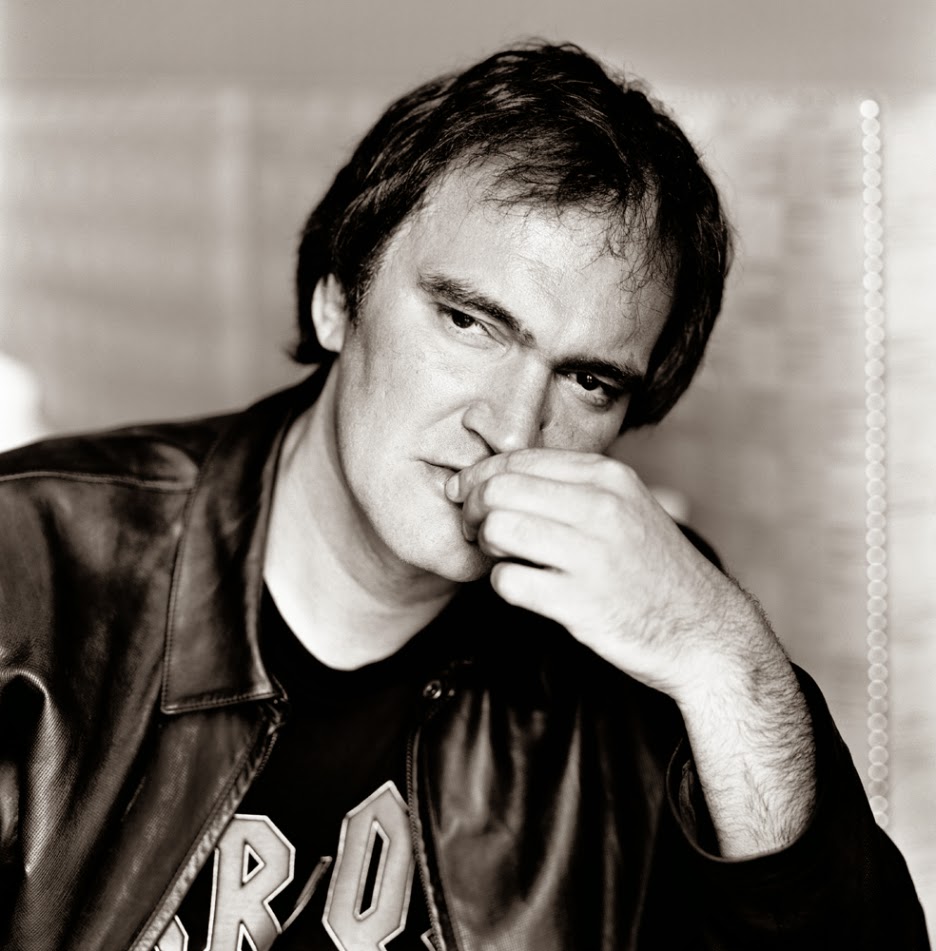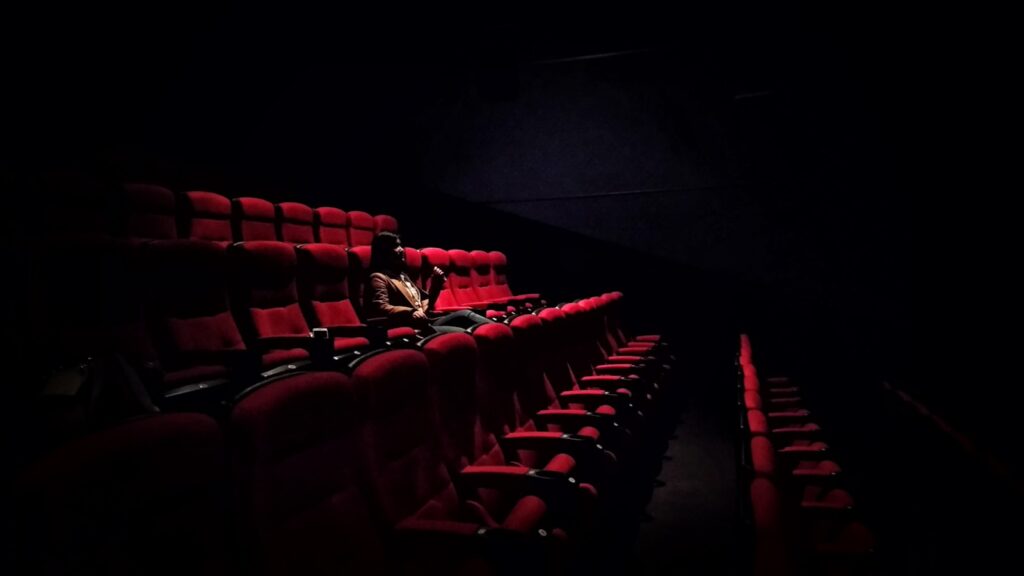
In the sprawling, often tumultuous landscape of cinema, few things ignite conversation quite like controversy. From the very inception of film, with works like D.W. Griffith’s 1915 epic ‘The Birth of a Nation,’ controversy has been an almost inherent companion, whether born from accidental misunderstanding, the prevailing political climate of a contemporary release, or, quite frequently, from a deliberate artistic choice designed to prod, interrogate, and challenge an audience’s preconceptions.
Indeed, some filmmakers have not merely flirted with scandal but have built entire careers upon its shifting sands, becoming as famous, if not more so, than the very films that sparked outrage. This path can be a double-edged sword: a powerful catalyst to propel an innocent or misunderstood film into the public consciousness, or, conversely, a facile tool for attention-seeking directors whose “nonsense” might otherwise be overlooked. The line between groundbreaking artistic vision and self-indulgent provocation is often blurred, inviting us to question where true genius lies and where it veers into the realm of the truly unhinged.
We embark on an analytical journey through the careers of directors who have consistently operated within this contentious space. These are the provocateurs, the boundary-pushers, the maestros of the uncomfortable, whose controversial output forces a reckoning with themes often deemed too taboo for the mainstream. Their works, spanning critical acclaim and widespread condemnation, invite us to ponder: Is this the work of a genius challenging our perceptions, or simply the output of an artist unafraid – or perhaps even eager – to venture into the depths of perceived insanity?

1. **Harmony Korine: The Infamy of the Young Provocateur**Harmony Korine rose to cinematic infamy at an astonishingly young age, penning ‘Kids’ when he was just 18. This 1995 film, directed by Larry Clark, was instantly branded “a horrible and problematic piece of cinema” due to its graphic depiction of rape and underage ual activity, bordering on the pornographic. The raw, unfiltered nature of the script felt, as some observed, “as if it was written by a jumped up teenager, which it obviously was,” yet it irrevocably launched Korine’s star, largely because of his youth and the sheer audacity of the material.
Following ‘Kids,’ all eyes were firmly fixed on Korine’s career trajectory, which has subsequently been characterized by what many critics perceive as a continuous stream of “narcissistic, self-indulgent trash.” It is predominantly his writing that has consistently generated the most significant controversy and attention around him. His later work, such as ‘Ken Park,’ continued to explore similarly disturbing themes, ensuring his place as a figure consistently associated with contentious content.
His most notable commercial success, ‘Spring Breakers,’ further cemented his reputation for overt provocation. The film features “a handful of attractive, young women spending 90 minutes wearing nothing but bikinis,” with Korine overtly ualizing them and having his “camera leer at them gratuitously.” While the film gained a broader audience, it continued to raise questions about the nature of his gaze and intent, with some viewing his “tiresome avant-garde efforts” as increasingly desperate for attention, to the point where they might not even “create a public outcry anymore.” His career, in essence, appears “funded by controversy,” driven by a consistent pursuit of notoriety, perhaps even a desire to recapture the intense levels of infamy achieved with his earliest works.

2. **Gaspar Noé: Visceral Aesthete of the Extreme**Gaspar Noé is a name synonymous with cinema that is designed to shock, disturb, and challenge. His breakout 2002 sophomore film, ‘Irréversible,’ catapulted him to worldwide recognition, not just for its audacious reverse-chronological narrative but, more significantly, for its “multiple scenes of ual and physical violence,” most notably a harrowing and extended rape scene. This “rape-revenge drama” immediately established Noé as a filmmaker unafraid to confront audiences with the most visceral and uncomfortable aspects of human experience.
What followed ‘Irréversible’ was a relentless series of films that continued this trajectory, each one “visceral, aesthetically bold and deeply challenging.” Noé consistently pushes “the boundaries of what was considered appropriate on-screen,” all while offering distinct technical or visual innovations. His work demands a confrontation, not merely a viewing, of its often-repugnant content, forcing audiences to grapple with its implications long after the credits roll.
Examples of his unwavering commitment to explicit and disturbing imagery abound. His 2015 film ‘Love’ controversially “depicted an ejaculating ,” while ‘Climax,’ released three years later, featured the shocking moment where “a child electrocuted to death.” These instances underscore a directorial vision that treats the most severe taboos not as limits but as canvases for exploration, making even his more subdued works, such as the dementia-focused ‘Vortex,’ appear almost “quaint” in comparison to his body of work. Noé’s films are not just controversial; they are meticulously crafted assaults on conventional morality, leaving audiences to ponder if this is artistic bravery or an almost pathological desire to provoke.

3. **Quentin Tarantino: The Master of Stylized Violence and Historical Revision**Before he became “one of the most popular directors today with a dedicated fanbase,” Quentin Tarantino was viewed as a particularly “risqué” and controversial figure in the early 1990s. His debut feature, ‘Reservoir Dogs,’ faced heavy criticism for its “brief depiction of torture,” even though much of the explicit violence was judiciously kept off-screen. This early flirtation with controversy set a precedent for a career that would consistently push against the comfortable boundaries of cinematic representation.
His follow-up, ‘Pulp Fiction,’ while a critical darling that won the prestigious Palme d’Or at Cannes, still managed to spark public outrage, with “a woman in the audience famously shouted, ‘Scandale! Fasciste!'” to which Tarantino, ever the provocateur, “gave his middle finger in response.” This moment perfectly encapsulated his defiant attitude towards critics and his commitment to his distinct, often polarizing, vision. Each film since has prominently featured violence, presented with a signature stylized flair, invariably sparking “intense debates with every release.”
Even his more recent and critically acclaimed work hasn’t escaped the controversy trap. His latest film, ‘Once Upon a Time in Hollywood,’ despite being “gore-free for the bulk of the movie,” featured a “particularly controversial and bloody ending.” This climax saw Tarantino boldly “re-write a pivotal moment in 1960s history,” offering a perverse redemption arc for a wife-killer and transforming the narrative into something scandalizing from its very inception. Tarantino’s genius lies in his ability to craft engaging, witty dialogue and memorable characters, often masking or elevating the very violence that generates such widespread debate, leaving audiences to wonder if his provocative choices are essential to his narrative genius or merely a means to shock.

4. **Michael Haneke: The Unrelenting Architect of Discomfort**Michael Haneke’s filmography is a stark tapestry woven from “black comedies, satires and social dramas,” often interspersed with significant moments of controversy. His 1997 film, ‘Funny Games,’ along with its later English-language remake, caused “widespread outrage due to the sheer, unrelenting bleakness of its tale of a home invasion.” The film’s deliberate breaking of the fourth wall and its refusal to offer any traditional catharsis or escapism was so unsettling that it prompted “a third of its Cannes audience to walk out,” a testament to its profound impact and the discomfort it instilled.
Haneke’s work is characterized by an almost clinical examination of violence and its unsettling normalization within society, pushing audiences to confront their own complicity as viewers. He doesn’t just show violence; he interrogates the act of watching it, making the audience intensely aware of their position. His subsequent film, ‘The White Ribbon,’ which explored mysterious violent acts in a rural German town before World War I, was met with an equal measure of “showers of praise” and “reactions of shock,” demonstrating his consistent ability to both captivate and disturb critical and general audiences alike.
On the often challenging nature of his uncompromising work, Haneke himself has offered a revealing insight, admitting to trying to “rape the viewer” into “being reflective.” This blunt and provocative statement encapsulates his entire artistic philosophy: to force introspection and critical engagement through deeply unsettling cinematic experiences. His films are not merely controversial for their content, but for their deliberate manipulation of the viewer’s psyche, positioning Haneke as a profound, albeit often unbearable, cinematic force who demands difficult questions from his audience, blurring the lines between critical insight and psychological assault.

5. **Larry Clark: Documenting the American Underbelly with Unflinching Realism**Larry Clark, a director who previously established himself as a highly influential photographer, transitioned to filmmaking with a directorial vision as stark and uncompromising as his still images. His 1995 film ‘Kids,’ written by Harmony Korine, became an instant lightning rod for controversy due to its raw and graphic “depiction of underage children raping each other, taking drugs and spreading HIV.” The film simultaneously garnered significant “acclaim and derision,” with responses ranging from a Palme d’Or nomination to accusations of being borderline “child pornography.”
Clark continued to explore similar challenging themes with his 2001 film ‘Bully,’ based on the real-life events of “a group of affluent teenagers who murdered one of their own.” Once again, Clark’s filmmaking proved “utterly divisive and split audiences down the middle.” His narratives delve into the often-ignored, darker facets of youth culture and American society, presented with an almost documentary-like detachment that intensifies the uncomfortable reality on screen, forcing viewers to confront disturbing truths without easy answers.
To this day, ‘Bully’ and Clark’s other works ignite fierce debate among audiences, with some arguing that his films are “a quintessential dissection of the American middle classes,” offering vital, albeit brutal, social commentary. Others, however, dismiss them as “shamelessly titillating exploitation flicks,” capitalizing on sensational subject matter for shock value. This persistent division highlights Clark’s unique position: a filmmaker whose unflinching realism and choice of subject matter consistently provoke intense moral and artistic scrutiny, perpetually questioning whether his output represents societal genius or exploitative sensationalism.

6. **Lars Von Trier: The Misunderstood Provocateur of Human Darkness**Lars Von Trier, the Danish director renowned for his often intense trilogies, has consistently fixated on “the dark depths of humanity,” a preoccupation that has repeatedly landed him in deep controversial waters. While his earlier film ‘Dogville’ garnered criticism for its “lengthy run-time and perceived pretentiousness” rather than overtly shocking content, it was his 2009 work, ‘Antichrist,’ that truly unleashed a fervent wave of condemnation. This film, starring Willem Dafoe and Charlotte Gainsbourg, was widely criticized for its graphic “imagery of infant mortality and genital mutilation,” pushing the boundaries of cinematic depiction to extreme levels.
Beyond the explicit visual content, Von Trier’s controversies have sometimes spilled into his public persona. He famously made “tone-deaf jokes about ‘being a Nazi'” at a Cannes press conference, an incident for which he has since “apologised profusely.” These remarks led to him being declared persona non grata at the festival for several years, demonstrating how a director’s perceived “insanity” can extend beyond the screen and into real-world reputation, adding another layer to the public’s perception of his work.
Despite the outrage, or perhaps because of it, Von Trier remains “one of the most controversial filmmakers working today.” His work consistently explores themes of depression, psychological trauma, and extreme human suffering with a singular, often stark aesthetic. While some perceive his provocative choices as a cynical bid for attention, his defenders argue that his films offer profound, albeit profoundly uncomfortable, insights into the human condition, making him a divisive figure whose genius is perpetually debated against accusations of gratuitous sensationalism.
.jpg/1200px-William_Friedkin%2C_Festival_de_Sitges_2017_(cropped).jpg)
7. **William Friedkin: The Shockwaves of Demonic Possession and Urban Vice**William Friedkin carved out his place in cinematic history, not just with acclaimed thrillers but with works that profoundly shocked and polarized audiences. His 1973 film ‘The Exorcist’ stands as a monument to on-screen controversy, so unsettling in its depiction of demonic possession that it sparked “widespread reports of people fainting in the theatres and fleeing from the screens.” The film’s visceral power was such that home sales were infamously “banned in the UK right up until 1999.”
Friedkin, evidently “unperturbed” by the uproar, continued to delve into material that was equally “controversial and inflammatory.” He dared to explore the dark underbelly of urban life with his 1980 crime thriller ‘Cruising,’ starring Al Pacino. This film, set in the gay leather subculture of New York City, was met with accusations of homophobia from “many in the LGBTQ+ community,” who believed it presented a problematic and stereotypical depiction of “leather culture.”
Decades later, Friedkin’s capacity for provocation remained undiminished. His 2011 film ‘Killer Joe’ once again pushed boundaries, notably featuring a scene that involved “oral rape simulated with a drumstick of fried chicken.” This moment, like many others in his filmography, solidified his reputation as a director willing to plumb the depths of human depravity and discomfort, forcing audiences to question the limits of what cinema should portray, and whether such audacity stems from a bold artistic vision or a desire to merely sensationalize.
8. **Ken Russell: Britain’s Maverick Maverick and Provocateur of the Psyche**Cult British director Ken Russell was a force of nature who redefined the scope of national cinema. As critic Mark Kermode recalled, Russell “proved that it didn’t have to be about kitchen-sink realism,” instead venturing into a “creative exploration” that spanned historical horror, romance, and science fiction, with controversy often trailing closely behind. His audacious vision frequently clashed with conventional sensibilities, creating films that were as polarizing as they were groundbreaking.
His 1971 film ‘The Devils,’ a searing biopic of a Catholic priest, became a legendary flashpoint of scandal. Its “graphic portrayal of and religion” was so explosive and “incendiary that Warner Bros. simply refused to release it” in its original form, leading to decades of debate and censorship. The film’s unapologetic depiction of religious fervor intertwining with carnal desires pushed societal buttons and established Russell as a director unafraid to tackle deeply sensitive subjects.
Russell’s later works continued his foray into the extremes of the human psyche, consistently probing taboos and challenging the status quo. His controversial streak wasn’t confined to the screen; it famously spilled over into his public life when, in a televised interview, he “hit a film critic on the head for calling the film ‘monstrously indecent.'” This incident perfectly captured Russell’s passionate, often volatile, approach to his art and his critics, reinforcing his image as a maverick whose “genius” was often inseparable from his perceived “insanity.”

9. **Agnès Varda: The Feminist Auteur and Her Radical Gaze**Agnès Varda, a pioneering and “uncompromising force of female filmmaking talent,” dedicated over six decades to expressing herself through more than twenty films. While now rightly celebrated for her groundbreaking contributions as a woman director, her feminist perspective in the mid-20th century was inherently controversial at a time when such voices were often marginalized or dismissed. Varda’s radical vision was never content to merely reflect society; it actively sought to interrogate and redefine it, particularly through the lens of gender and uality.
Her films often didn’t shy away from challenging prevailing moralistic norms. Her 1988 film ‘Kung Fu Master’ ignited conversations by focusing on “the ual relationship between a 40-year-old woman and her daughter’s 15-year-old friend,” a narrative choice that directly confronted age and consent taboos with a nuanced, non-sensationalist approach. Varda’s genius lay in her ability to explore complex human relationships without judgment, allowing the audience to grapple with the inherent discomfort of challenging societal boundaries.
Even in her later, semi-autobiographical documentary, ‘The Beaches of Agnés’ (2008), Varda continued to subtly provoke, creating “a ripple of outrage at the time for showing an adult man’s erect .” This seemingly minor detail underscored her lifelong commitment to an unfiltered, truthful representation of the human experience, regardless of public comfort. Varda’s legacy demonstrates that artistic controversy isn’t always about shock value, but can be born from a steadfast dedication to a unique, often feminist, perspective that dares to show what has historically been kept hidden, cementing her status as a genius whose radical honesty was sometimes mistaken for indiscretion.

10. **Ari Aster: The Contemporary Master of Disturbing Americana**Ari Aster has rapidly ascended to prominence as a contemporary director whose films expertly tap into deep-seated anxieties, presenting narratives that are as psychologically complex as they are viscerally unsettling. His latest cinematic offering, ‘Eddington,’ exemplifies his knack for igniting controversy by weaving profound social commentary into the fabric of horror. The film, starring Joaquin Phoenix as Joe Cross, a conservative sheriff, and Pedro Pascal as liberal Mayor Ted Garcia, delves into the political upheaval of the COVID-19 pandemic, quickly spiraling into a deadly conflict.
Aster’s work often operates on multiple layers, challenging expectations and subverting genre conventions. In ‘Eddington,’ the narrative initially seems to “unravel Joe as the true villain” as he kills Ted and his son. However, it is Aster’s “brilliant twist related to Antifa, a left-wing anti-fascist group in the USA,” that propels the film into truly controversial territory, directly tying into the movie’s overarching themes of societal division and political extremism.
This unexpected turn transforms Aster’s satirical narrative “into American society’s worst nightmare,” establishing ‘Eddington’ as “one of A24’s scariest movies.” Aster’s genius lies in his audacious willingness to tackle highly sensitive, current socio-political fault lines, presenting them through a lens that forces uncomfortable introspection rather than easy answers. His ability to craft stories that resonate deeply with contemporary fears, turning familiar anxieties into terrifying cinematic realities, firmly positions him as a director whose perceived “insanity” is, in fact, a remarkably sharp and provocative reflection of modern collective unease.
From the unflinching realism of Friedkin to the subversive spectacle of Waters, the defiant vision of Russell, the radical honesty of Varda, the intellectual brutality of Kubrick, the ethical quagmire of Bertolucci, the censored resilience of Zulawski, and the contemporary anxieties brought to life by Aster, these filmmakers demonstrate that controversy is not merely a byproduct of their work, but often its very essence. Their cinematic journeys, rife with both condemnation and adoration, continually challenge us to confront the uncomfortable, to question our perceptions, and to grapple with the profound, often unsettling, beauty of art that dares to push the boundaries of genius, even if it skirts the edges of what some might label insanity. In the grand tapestry of film, these are the indispensable threads that remind us of cinema’s power to provoke, to reflect, and ultimately, to endure.





